Hello out there in TV Land! Your friendly neighborhood Mikey checking in again with another fun blog about odd animal facts. This one concerns a subject that is near and dear to my heart, and one which I have been told is a staple of my reptile programs, wherever I have done them. A few months ago Jill wrote up a similar posting. Allow me to elaborate on it a little more. My topic is going to be the Venomous VS. Poisonous debate. with a main emphasis on snakes. Also, this posting is going to be in two parts- the first will delve into the differences between venomous and poisonous and the second will go into detail about the predominantly different types of snake venom and their effects.
I know all of you have heard of cobras, and rattlesnakes, and copperheads and other dangerous snakes, right? And chances are that whenever you’ve heard or spoke of them, the term “Poisonous” has been brought up? Many people refer to the dangerous serpents as “poisonous snakes”. Here’s the fun part! There’s no such thing as a poisonous snake! The term itself is not correct – any snake possessing toxicity is in actuality a “Venomous” snake. Now, I know you guys are shaking your head and saying that they’re the same thing, but believe you me, it isn’t true! The term is properly applied depending on the animal’s (or plant’s) mode of introducing it’s toxin into something else’s system.
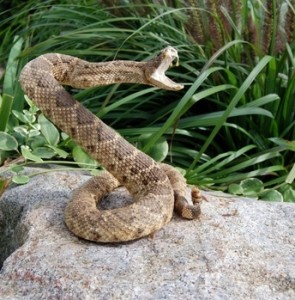

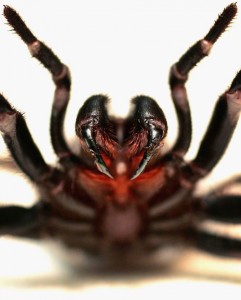
Venomous is when the toxin is injected into something else, be it a bite or a sting or whatnot. Poisonous is when the toxin is eaten or absorbed through the skin. Snakes can be venomous, as can scorpions, spiders, many fish and even bees (that’s why the sting hurts so much!). But no snake is poisonous, -you can eat a snake (although I don’t advise it) without getting envenomated. Things that are poisonous include many amphibians, a large number of plants (ever heard of poison ivy?), and my sisters cooking.
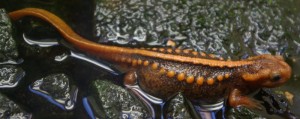
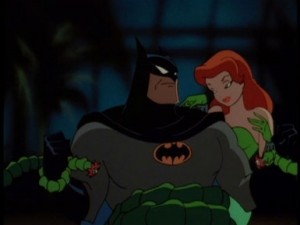
Coming soon… the Sequel! Where we talk about all the fun effects venom can have! Don’t touch that dial! 🙂
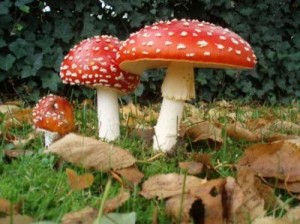
What about spitting cobras? How is their venom delivered?
Hey Mikey, good post!.
It’s a tough concept for some folks to grasp, the difference between poisonous and venomous. But let’s face it, most people don’t really care what you call it. If you step on Copperhead (or a lionfish) or you mess with poison ivy (cartoon villain or plant), you’re going suffer for it.
When I read “no such thing as a poisonous snake” I thought to myself, “surely, somewhere in this big old world there is a poisonous snake.” I found two. These snakes get their toxicity from eating other animals which are toxic, such as newts and toads.
The first is a garter snake in western US which eats toxic newts and retains the toxin in its liver: . I’m not sure if this helps the snake avoid becoming prey itself, but a local fox would probably not eat two of these snakes.
The second, keelback snakes in SE Asia: which actually seem to use, and advertise, the toxicity acquired from eating toxic toads as a defensive measure against being eaten themselves. The toxin is contained in glands on the snake’s neck and makes them distasteful to those who would think about eating them (the snake).
Hey there Libby!
Yes, spitting cobras are venomous as well – they are elapids like other cobras and their venom is primarily Neurotoxic in nature. They actually will “spit” their venom from their fangs, which actually means they are contracting the muscles around the venom glands and forcing the venom out small holes in the fangs. They generally aim at their targets eyes. And they are usually pretty accurate to distances up to 6 feet, although they can spray their venom over 12 feet in some species!
They can also deliver a perfectly venomous bite if they so desire, and the thinking is that they developed the spitting adaptation because most species live in areas where they may be trampled by the hooves of herding animals such as antelope.
So if you venture to Africa, or some parts of Asia to visit, watch wear you step and keep your sunglasses on. Even at night- that makes you cooler. Like ones of the Blues Brothers. 🙂
Hey Ranger Greg!
Thanks for the extra thoughts! I know a number of animals retain toxicity due to their diet such as Poison Dart Frogs and even sometimes Box Turtles (gotta love those mushrooms they eat!).
Good to know of the snakes – I tried to do a little research but couldn’t come up with much, but do you think that Eastern Hognose snakes retain any toxicity since their diet is primarily toads? I know there is an ongoing debate about them being harmless or a very low level venomous, but what about the possibility of them being slightly poisonous due to retained toad toxin? Any ideas?
Not sure about the hognose snake.
If it is toxic, it probably doesn’t “know it.” After all, one of it’s main defense strategies is to roll over and play dead.
The garter snake (Thamnophis sirtalis) eats a very toxic newt (Taricha spp.), but I ‘m not even sure that it realizes its own toxicity.
However the keelback snake of SE Asia (R. tigrinus) is toxic and lets everyone know it! It has a bright yellow throat which it displays when threatened by a predator (http://www.pnas.org/content/104/7/2265.full) “Go ahead, take a bite. I dare ya!”
Love your post, but unfortunately you are still wrong. A snake soaked in warfarin and eaten for dinner is a poisonous snake.
Actually there are poisonous snakes. For the life if me I can’t remember what they are. And I do mean poisonous, as in eating one would be dangerous.
I should have read Ranger Greg’s post
Not True at all there is a small group of snakes called Keeled Backed snakes that actually have both venom and poison glands
A snake specialist from Australia just described some sea snakes as poisonous meaning poison is rubbed into the wound from grooves in the teeth/fangs.
So what about the two snakes, I believe one is referred to as a Japanese grass snake and the other is in Oregon USA that are listed as poisonous because the excrete a posion that builds up after eating poisonous toads and newts and if you happen to touch these snakes you can get sick.
Japanese grass snakes are poisonous due to their diet of poisonous frogs. One of the only in the world. Now, granted, they don’t produce their own toxins, but that’s splitting hairs- er- scales.